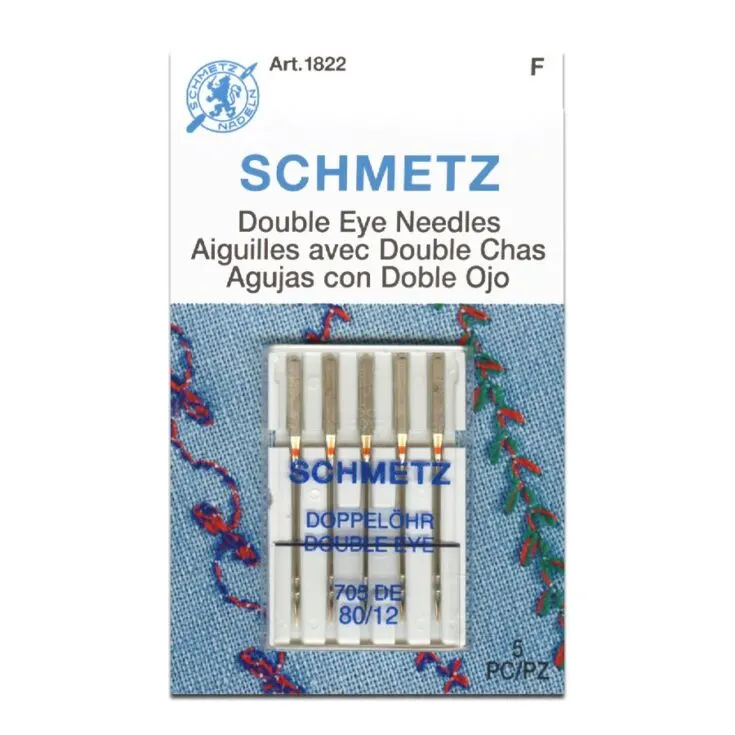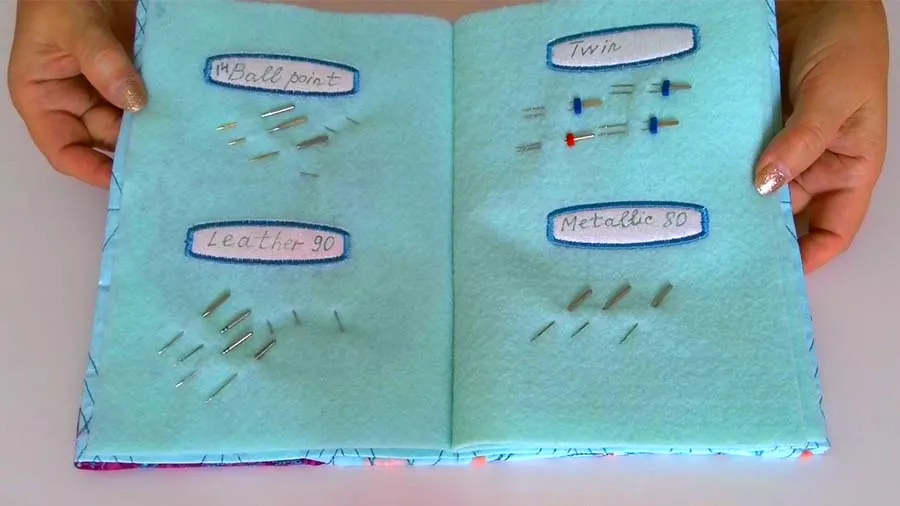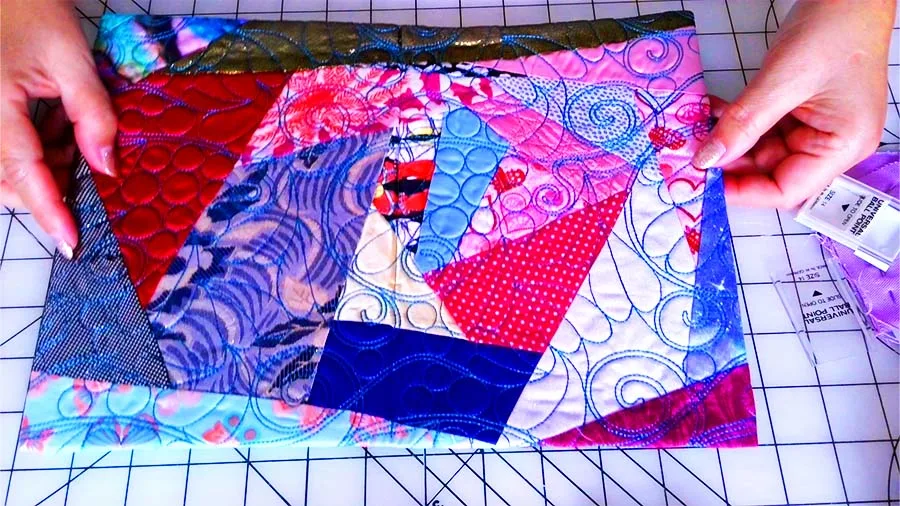It was a time when I didn’t even know there were different types of sewing machine needles – I was so lost. I can still clearly picture the irritated expression on my face as I pulled the fabric from the sewing machine for the fourth time. My fabric was getting tattered and the stitches were messy, uneven, and pulling. What on earth was going on? Had the sewing fairy tapped me on the shoulder in the night and removed all of my sewing skills? Ahh…the joy of learning new things.
There are a lot of reasons that sewing with a sewing machine can be difficult, but one of the most common things that we often forget about is a sewing machine needle. The needle is the workhorse of the sewing machine, making thousands of punctures in each project, magically weaving together thread loops to make something beautiful and useful.
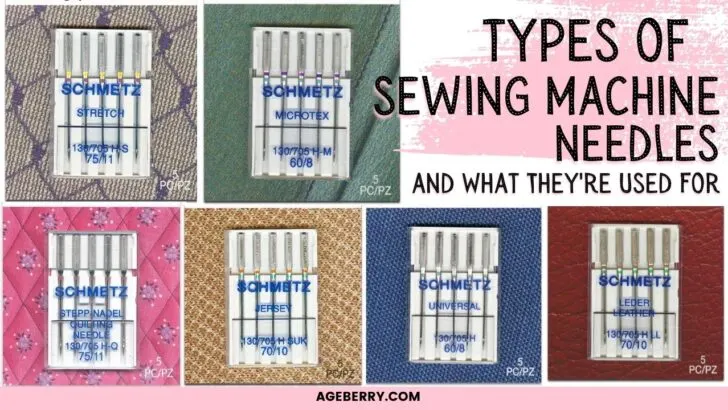
But isn’t a sewing machine needle … well, just a needle? Don’t you just pop a new one in and keep sewing if your needle breaks? Actually, I used to think exactly that when I first started sewing, and I was frequently frustrated that some of my projects didn’t look as tidy and pretty as I wanted them to. When I took the time to learn about having the right needle, my sewing projects began coming together with much less angst.
I’d had no idea that each kind of sewing machine needle was developed particularly for certain kinds of fabrics or sewing projects. I learned that sewing machine needles are like tools in my sewing toolbox. Using the wrong needle for a project is like trying to pound nails with a screwdriver. You can get it done eventually, but the work goes better and more quickly if you have the right tools for the job.
How to Choose a Correct Sewing Machine Needle for Your Project
If you go to buy needles, you will be overwhelmed by a seemingly endless selection of needles at your local sewing store.
When choosing a needle for your project, there are several factors to consider, among them fabric type, thread type and weight, and stitch type and design details. Start by looking at your fabric type – this will determine whether you need a universal needle or something more specific like a denim/jeans or ballpoint needle.
Next, consider your thread type and weight – if you’re using thicker threads (12 wt), then you should use a heavy duty needle; if you’re using metallic threads, then use a metallic needle.
Consider stitch type and design details – if you’re doing decorative topstitching then use a sharp point or topstitch need; if you’re adding embroidery designs then use an embroidery-specific needle.
Use this guide as a starting point when selecting the right needle.
Types of Sewing Machine Needles
Universal Needles
Universal needles are probably the most common type of needles used in sewing machines today. You know those fancy multitools that feature all kinds of gadgets, from pliers to various types of screwdrivers? This is your universal needle. You can use it for most of your basic sewing.
Note: Some of the links on this page are affiliate links. This means I will receive a commission if you order a product through one of my links. I only recommend products I believe in and use myself.
It comes in various sizes. It has a tip that is slightly sharp and slightly rounded, meaning that it can stitch both traditional woven fabrics and stretchy woven fabrics and even not very stretchy knits.
The size of the needle is determined by a number; the higher the number, the thicker the needle. These are the main sizes for universal needles:
- 70/10 --good for lightweight fabrics, like silk or lining fabrics.
- 80/12 -- a medium weight needle. It will sew quilting fabrics like cottons, polyesters, and rayons. This needle is as close to an all-purpose needle as you can get.
- 90/14--a heavyweight needle. If you want to sew things like corduroy, you’ll want this kind of needle.
There are several brands out there that offer universal machine-specific needs such as Schmetz, Organ or Singer which make it easy to find exactly what you need. These brands offer high-quality needles that are designed to provide superior performance no matter what type of fabric you’re working with.
Other Kinds of Sewing Machine Needles
Wouldn’t it be nice if your sewing machine could speak up and tell you what’s up when you are having trouble sewing?
It would be fabulous if it could say “Hey! The needle is dull, you knucklehead! Sewing is getting hard, so change the needle!” Or “You out there! This is the wrong needle for this project! Don’t get mad at me! Change your needle!”
While a universal needle is a fabulous tool for your sewing toolbox, sometimes you will need a more specialized needle. Your sewing machine doesn’t have a voice, and it can’t tell you if something is wrong. Therefore, it is up to you to put the right needle for the project into the machine. If you have the wrong needle, not only can you make a mess of your project, you may even break your machine.
Ball Point Needles
If you are working with different types of knit fabrics, a ballpoint needle is more appropriate than one with a sharp point. It has a round tip that helps the needle pass through the loops of knitted fabric without snagging or damaging them. The result is a smooth, clean stitch line with no runs in the knit fabric.
Related post: How To Sew Knit Fabric | 23 Expert Tips For Beginners
Ball point needles also come in different sizes that correspond to the size of the thread being used. For example, a heavier weight thread will require a larger size needle than a light weight thread. Different types of fabrics also require different sizes; for instance, cotton knits or velvet knits would require a heavier needle than silk knits. It’s important to be aware of these differences so you use the correct ball point needle for each project.
From my experience, these needles will not work well with woven fabrics.
You could use a universal needle with your knit or stretchy fabric, but when you do that, you increase the likelihood that you will pick or pull the fabric threads or your machine may skip stitches. Your knit project will stitch up tidier when you use a ballpoint needle.
Jersey Needles
Named for the fabric and not the cow, Jersey needles are practically the same as ballpoint needles - they also have a round tip.
These needles are ideally made for classic knit fabrics such as jersey, interlock, etc. These fabrics require a softer touch so as not to damage the fibers during stitching—a task at which jersey needles excel.
Related post: All About Modern Types Of Knit Fabric
The rounded tip helps the needle pass between the fibers instead of piercing them as a sharp point would.
But jersey needles are not so good for spandex fabric as the needle manufacturer says.
Stretch Needles
Stretch sewing machine needles are tailored to sew knit fabrics, particularly those with high elasticity. A stretch needle has a medium ballpoint tip.
The eye of a stretch needle is shorter and thinner and the indentation surrounding the eye, called the scarf, is deeper.
The SCHMETZ company reminds us that stretch needles should always be used when there is Lycra®, Spandex or elastic in the fabric fibers.
But even if you've felt unsure if your knit fabric includes these things, rest easy knowing that it never hurts to use a stretch needle - especially considering these needles will help you avoid skipped stitches and provide improved quality results.
Related post: The Ultimate Guide to Stretch Needles
When it comes to the kinds of stretch needles you can purchase, you have your regular stretch needles and then a chrome plated variety. Schmetz is a reliable manufacturer of quality chrome plated Stretch needles.
The chrome plated needle better resists heat and wear; it also stays cooler under pressure so that there is less stitch distortion when sewing. Furthermore, the thread passes through the needle's eye with less friction, making sewing knits easier overall.
If you want to sew swimwear (because we all know that shopping for a bathing suit is a nightmare), dancewear, or underclothing, you probably will end up using very stretchy fabrics like Lycra or spandex. These fibers definitely need a stretch needle.
Sharp Needles
Aren’t all needles sharp? Actually, no. As mentioned above, some needles have more blunt, rounded tips. However, a sharp needle has a very slim point.
This sharpness means that these needles create lovely topstitching and very straight, accurate lines in stitching quilt pieces. These needles have a thick shaft to work with multiple layers of fabric.
Microtex Needles
Microtex needles are practically the same as sharp needles. The Microtex needle is a simple tool to achieve perfect topstitching and works well for silk, rayon, microfiber, or metallic fabrics.
Its slim, acute point creates beautiful stitching with minimal effort and without leaving a hole in the fabric that can occur when using some other types of needles.
Topstitch Needles
Topstitch needles have very large eyes and grooves that help the thread flow smoothly through the needle.
This means that this needle is perfect for metallic threads or other delicate or fancy threads. The topstitch needle has a sturdy shaft, meaning that it works well for sewing bags or doing fancy topstitching on things like jeans.
It can also be used for machine embroidery.
Related post: How To Topstitch | 17 Topstitching Tips Every Beginner Should Know
Metallic Needles
Do you like using fancy, metallic threads in your sewing? These threads are so fun but, you probably know that they are very delicate and they break and snag easily.
A metallic needle will help you sew with these gorgeous threads because it has a very large eye and a coating that helps the thread slide smoothly through the eye.
Metallic needles are also great for sewing with delicate threads or doing machine embroidery.
Related post: Metallic Thread For Embroidery And Sewing: Top 10 Tips You Must Know
Quilting Needles
Quilting is a very popular form of sewing. The hard part about quilting, though, is that you’re stitching through lots of layers of fabric and batting.
That’s why you need a quilting needle that is very sharp and sturdy. They come in a variety of sizes and should be matched to the heaviness of your quilting project.
Related post: The Basics of Straight Line Quilting
Jeans/Denim Needles
Denim needles are made tough and strong to stand up to puncturing heavy denim fabric. Using a denim needle when sewing denim and canvas can reduce skipped stitches and breakage of your needle.
If you are using lightweight denim, choose a 90/14 needle, but for thick, heavy denim, use a 100/16 needle.
Fleece Needles
Fleece is a wonderful fiber to sew with, and you can make all kinds of toys, blankets and clothes with it. The downside to fleece is that it can be kind of bulky, resulting in skipped stitches.
A fleece needle can help prevent that, making your fleece sewing so much more fun!
Embroidery Needles
Needles for doing machine embroidery feature a large eye so that you can easily make delightful embroidery with vibrant specialty threads on your fabric projects.
Other kinds of needles have smaller eyes and this can create friction in your thread, leading to messy projects.
Related post: Machine Embroidery Needles 101: how to choose the right needle for your embroidery project
Leather needles
Do you want to sew with leather? Then you definitely need to pick up a leather needle.
These specialty needles are designed to also stitch things like vinyl, fake leather, and real fur. These needles have a spear shaped tip (wedge tip) to help penetrate these durable fabrics.
Related post: Leather Sewing Needles | What They Are And How To Use Them
Vinyl Needles
Like leather needles, vinyl needles are tough and strong to penetrate vinyl, oilcloth, and fusibles.
One cool thing about a vinyl needle is that it is treated with an anti-adhesive coating to keep sticky residues from building up on it as you sew these kinds of fabrics.
Related post: Sewing Vinyl: 17+ Expert Tips For Beginners
Twin Needles
A twin needle is made of two needles connected by a bar at the top.
You can sew two lines of stitching with a twin needle and it is often used for sewing knit fabrics, particularly hemming garments. On the backside of your project, the stitching will look like a zigzag.
Related post: Twin needle sewing machine – everything you need to know about sewing with a twin needle
Triple Needles
Triple needles are similar to twin needles, except for one big difference. There are three needles attached to the bar rather than two. You can make pretty decorative stitching with a triple needle.
Wing Needles/Hemstitch
If you like delicate heirloom stitching like smocking and eyelets, a wing needle might be one more tool to place in your sewing toolbox.
These needles recreate the fancy delicate stitching that you might see in textiles from the 1940s.
The wing needle has a wide arrow-shaped shaft which punches a hole in the fabric while the machine stitches around the hole.
This makes gorgeous effects in lightweight fabrics that are perfect for clothing, pillowcases, and table linens.
Double Eye Needles
Double eye needles are very cool. These needles have two eyes so that you can use two different colors of thread in the same needle.
This can create amazing effects in your machine embroidery and topstitching. If you choose to use this kind of needle, slow down as you sew so the thread will feed well.
Self Threading Needles
Buying self-threading needles can help you enjoy this hobby even if your eyesight is poor. A self-threading needle has a slit in the eye to help make threading it easier.
This slit is wide enough for a single strand of thread to pass through without having to use any special tools or maneuverings.
All you need to do is place your thread in the slit and pull it through until it reaches the other end. The result? You get a perfectly threaded needle in seconds!
Can You Use a Universal Needle When Piecing a Quilt?
When piecing a quilt together, it is important to match your sewing needle to the fabric you are using. A universal needle generally works well with traditional quilting cottons and cotton blends, but if you are working with fancier fabrics, it might be wise to invest in a different type of needle that is more suitable for that fabric.
For instance, if you are making a t-shirt quilt (from jersey knits), it would be better to opt for a stretch or jersey needle. And if you making a quilt from denim use a jean needle.
What Is the Difference Between Stretch Needle and Universal Needle?
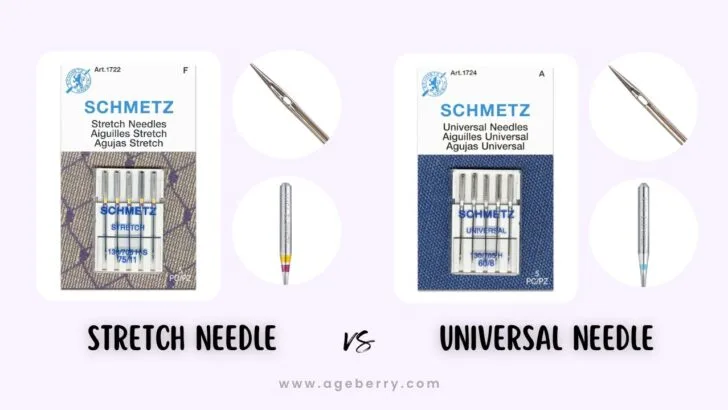
Stretch sewing machine needles have medium ballpoint tips which allow them to smoothly move between fabric fibers when working with highly elastic knit fabrics, such as swimwear and activewear. On the other hand, universal needles feature a sharper tip designed to penetrate a variety of woven and knit fabrics, from lightweight chiffon to heavy wool blends. Additionally, stretch needles tend to have smaller eyes and deeper indentations around the eye (known as “scarf”) than their universal counterparts.
What Is the Difference Between Universal Needle and Ball Point Needle for Sewing?
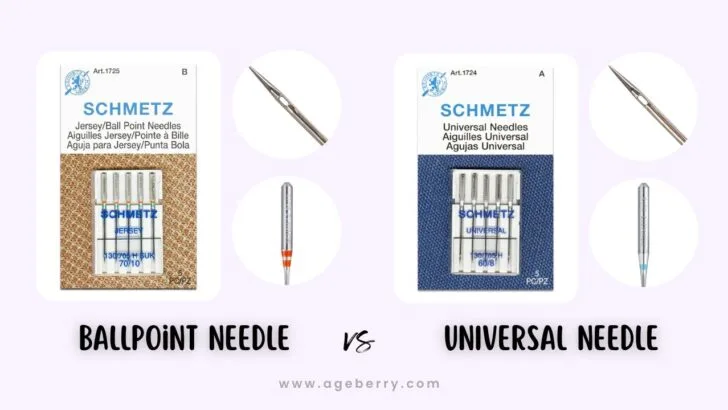
Universal needles are a great all-around option that can handle both woven and slightly stretchy knits. However, when it comes to sewing with knit fabrics, a ballpoint needle is necessary. That’s because the rounded tip on this type of needle glides between fibers instead of tearing them apart like a universal needle would do with knits. The result is a seam that looks smooth, not ragged or snagged which is often what can happen if you use the wrong needle.
How to Tell the Difference Between Stretch and Universal Needle?
You can’t see the difference with your eye. Some manufacturers use color codes to help make it easier. Schmetz, for example, applies yellow coding on stretch needles while leaving universal needles uncolored.

When it comes to Organ needles, they don’t mark them at all. To save yourself from potential confusion, you can read the type of needle on the box or create a needle organizer book like mine which will aid in memorizing and determining differences. If you’re looking for help on how to create one, here’s the link to my tutorial.
How Can I Tell If My Sewing Machine Needle Is a Ballpoint and Universal Needle?
Figuring out the difference between a ball point needle and universal needle can be difficult, as there is no visible difference between them. To differentiate, some manufacturers use color codes, with Schmetz featuring an orange code on their ball point needles and no colors on their universal equivalents.

Unfortunately, Organ needles don’t feature any kind of color coding. You can also consult the packaging that each type of needle comes in or make yourself a nifty needle organizer book to help you keep track.
Did you find this tutorial helpful? If so, save this pin (see below) on your sewing board so you can come to this tutorial later when you need this information on types of sewing machine needles, and follow me on Pinterest for more tips, tutorials, and inspiration!
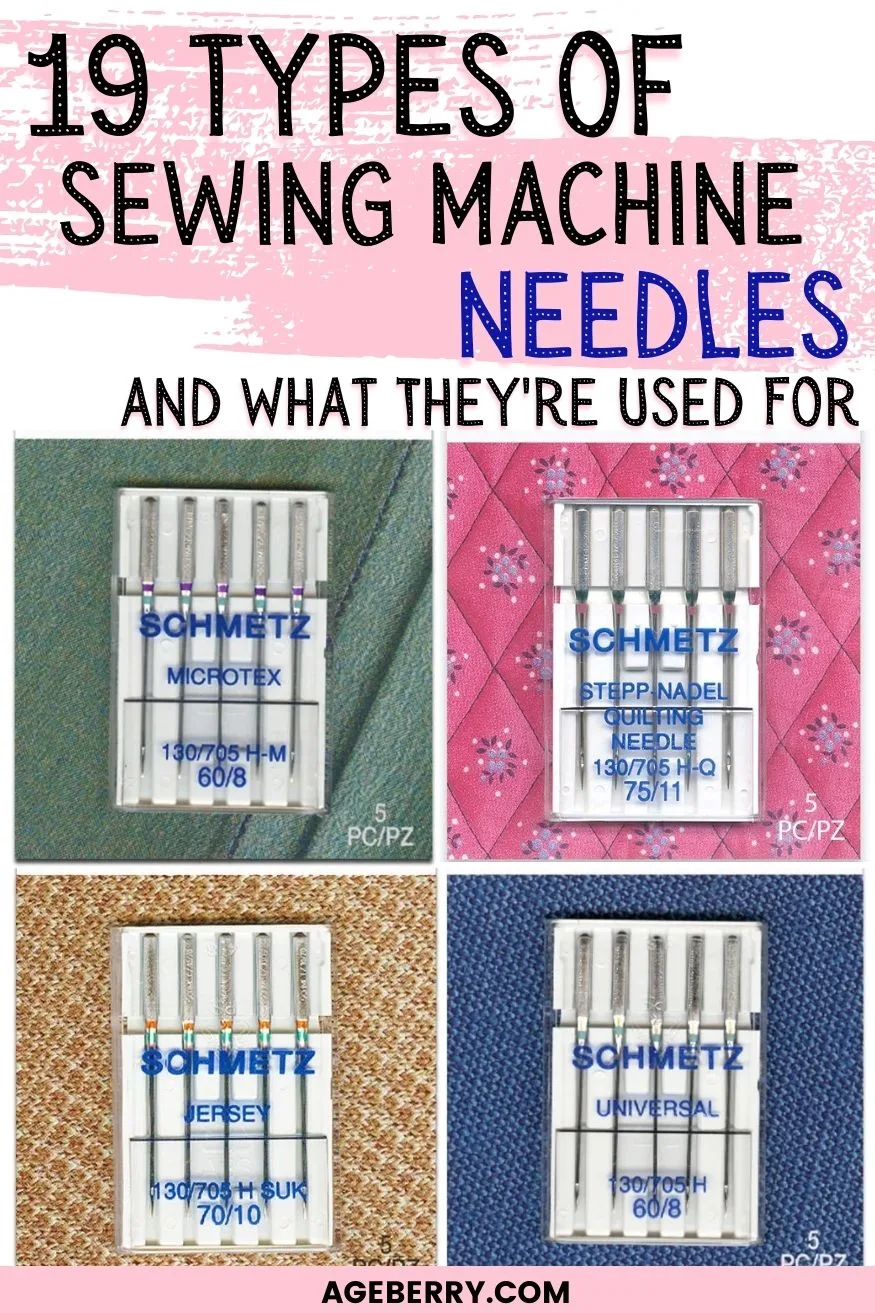
latest posts
- Knot a Problem: Easy Ways to Secure Short Thread Ends
- Ever Tried This on Your Serger? This Differential Feed Feature Will Amaze You
- Ditch My Sewing Machine? Not in This Lifetime!
- Adorable DIY Needle Book | Easy Tutorial for Beginners
- Master the Seam Ripper: Your Ultimate Guide to Precision Stitch Removal
- Think You Know Zippers? This Installation Guide Might Surprise You
- Why Does Your Seam Ripper Have a Red Ball? Discover Its Purpose!
- Topstitching Troubles? This Simple Trick Will Turn It Around Instantly!
- How to Sew Shirring: A Step-by-Step Guide to Elastic Thread Gathering


















